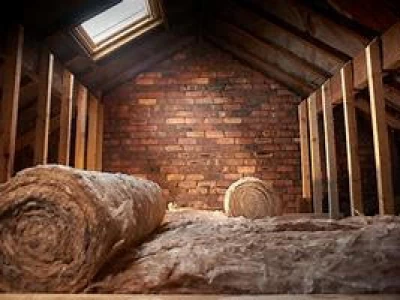Solutions
Solar PV Solutions for Your Home
Solar panels are classed as a permitted development to most properties however if you have a listed property or live in a conservation area you will need to speak to your local planning department alongside seeking guidance if you want to install either as a ground mounted system or on a flat roof.
IF you want to reduce your energy bills or consumption you have a number of options:
Solar Only
Solar panels, also known as photovoltaics (PV), capture the sun’s energy and convert it into electricity to use in your home. Installing solar panels lets you use free, renewable, low carbon electricity. The panels provide Direct Current (DC) and this is converted to Alternate Current (AC) via an inverter, this is connected via cables to your main consumer box and powers the home (Load). Any excess energy generated is sent back to the Grid and you can be paid by your energy provider (set rate but you can shop around for a better deal).
Solar and Battery Storage
Same set up as above but adding a battery means any excess energy generated goes to the battery and is stored until needed later in the evening when the panels generation stops – you then use the stored energy and therefore reduce your consumption from the grid further than just with panels.
AC inverter Battery Option
If you are in a position where you cannot have panels (listed, thatched roof or conservation area and refused planning, too small a roof?) then the other option is to have an AC inverter and battery, you can charge these at night through a lower rate of pence per kWh and use that stored energy during the day again reducing your outgoing bills.
Designer Infrared Heating Panels for Homes
Feel cosy and comfortable with infrared heater panels, beautifully made to complement the design of any interior
Stylish, ultra-slim and space-saving, infrared panels use radiant heat to warm the room evenly creating a comfortable, natural feeling of warmth that our customers love!
Instead of directly heating the air in a room, IR panels heat the walls, ceiling and floor evenly which absorbs the heat and gently re-emits the heat back into the room. This is more efficient than conventional heating systems which waste energy by heating large volumes of air.
- Benefits of Infrared panels for heating
- Reduced energy use
- Natural heat
- 100% net zero carbon heating
- Helps prevent mould and condensation
- Maintenance free, long lifetime, over 95% recyclable
- Easy to install
- Range of beautiful styles for your home (including heated mirrors for bathrooms and even Photo panels)
Loft and Wall Insulation
Loft insulation can be any different type of material but mainly comes in rolls and should be around 270mm or above in total depth over the loft area – if you use your loft to store items we recommend using “loft stilts” or “loft Shelves” and let the insulation do its job – it will save you anywhere between 15 – 25% in energy if done right.
Wall insulation depends on the type of structure your home is made from – most properties to around 1910 were solid wall construction so any heat loss will depend on wall thickness – to combat this either Internal or External Wall Insulation is suitable (IWI or EWI) BUT constraints could be in place such as a listed property or a building within a conservation area, so planning may be required. Also enclosing a buildings envelope will increase humidity so extraction of any build up of such will be required to ensure you do not cause condensation and mold! Finally most properties from 1910 onwards are of cavity build, again insulation may be required if you find your spending lots during winter to keep the property warm – again as with Solid construction above – humidity build up requires additional checks.

